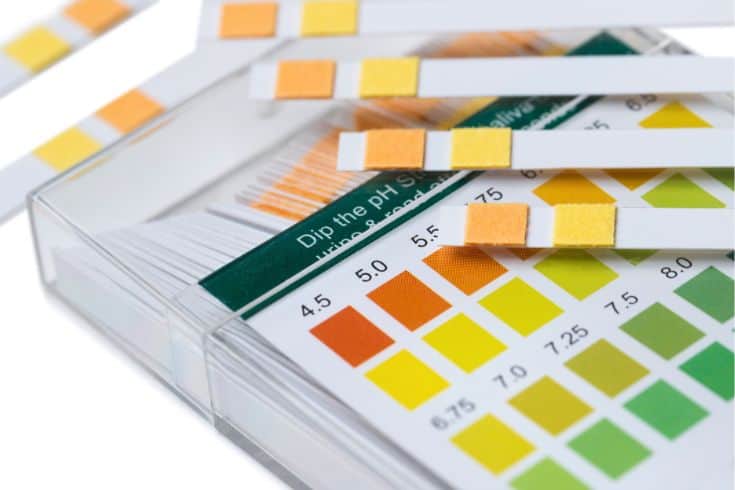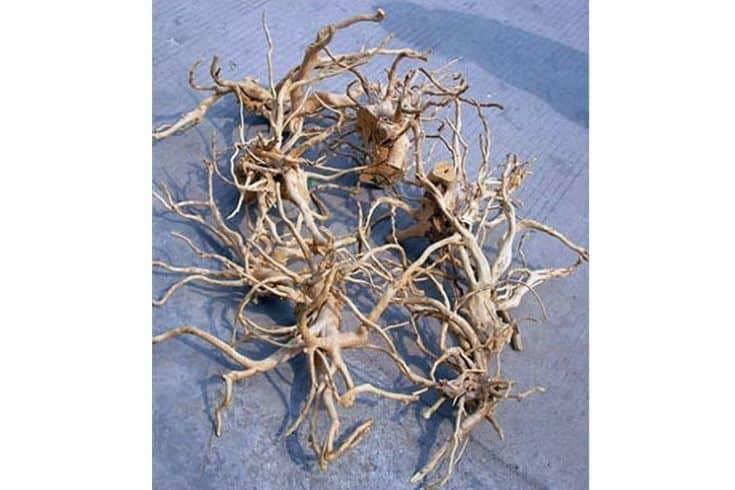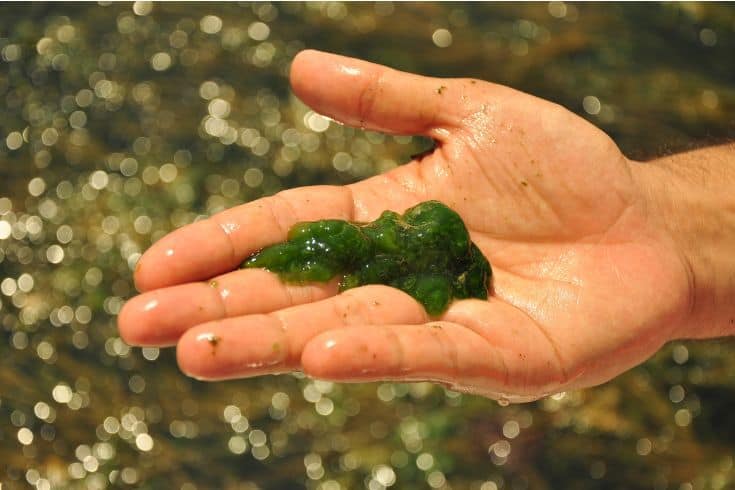Guppies, like most livebearers, are resilient fish that can withstand a range of water conditions. But keeping things in their optimal range ensures that they can live a healthy and long life. One of the most important parameters you should monitor is the pH of your tank water. A high pH means that the water is more alkaline and a low pH means that the water is more acidic.
Why is pH important for guppies? Well, pH can directly impact a guppy’s health, particularly its digestive and respiratory processes. This article will take a look at the preferred pH levels for guppies and how to maintain them. You’ll have a better idea of what to do if your pH is too high or too low, as well as some of the common causes of an imbalanced pH.
The Ideal pH Range For Guppies
The ideal pH level for guppies hovers between 7.0 to 8.0. You want to shoot for a slightly alkaline environment, without going too extreme. Doing so allows you to create a cozy living space for your fish that perfectly replicates their natural habitat.
Of course, your efforts to provide ideal water parameters should not put your fish’s well-being at risk. Any adjustments should be incremental and done gradually to prevent major changes in the tank’s pH. You can use testing kits or testing solutions to regularly check the pH in your guppy aquarium and ensure it is within an ideal range.
Testing water can be cumbersome, but undoing the damage caused by providing the wrong water parameters can be much more challenging. Therefore, you should ensure that you obtain accurate readings, and periodically monitor the water quality to keep your guppies in good health.
Why Are Your pH Levels Too High?

pH stands for potential hydrogen and is a measure of how acidic or alkaline a substance is. When your pH levels are too high, you’re usually dealing with alkaline waters. This is usually caused by an issue with the water source. Are you using a water tank, or a well? If so, there may be too much dissolved minerals in the water. This is especially likely if your local area has hard water.
Sometimes, high pH levels can also be caused by using tap water. Corrosion in water supply lines can result in increased levels of metals like copper and zinc being present. Also, municipal water treatment processes often add alkaline chemicals such as sodium hydroxide to raise pH levels. If you suspect your tap water is the culprit, have it tested and switch to a reputable filtered or purified alternative.
Last but not least, certain substrates can cause a spike in water pH. Usually, this is a deliberate effort on a fishkeeper’s part to try to increase pH levels for a particular species. However, enthusiasts who are new to the hobby may inadvertently purchase substrates that make the water too alkaline. Common culprits include crushed coral and seashells.
How To Lower pH Levels
Though guppies prefer their pH on the slightly higher end of things, a pH level that is too high can lead to disease, stress or even death. If you need to lower the pH levels in your tank, here’s what you need to do:
Incorporate Driftwood Into Your Tank Décor

Looking to enhance your tank’s natural aesthetics while creating a more acidic water environment? Please consider one of our favorite natural solutions – driftwood! Common types such as Malaysian driftwood are especially desirable, as they can soak in water for extended periods of time. The tannins that are released by this type of driftwood lowers the pH level in your tank.
Although driftwood can be an appealing solution, we recommend taking a few safety precautions. First and foremost, look for pointy edges that can harm your guppies. Driftwood is a natural material, so these edges are not always even in shape or size.
Secondly, please test your water pH levels before and after adding your driftwood to the tank. It can be difficult to predict how much the pH and other parameters will be impacted after your driftwood is added. Starting with smaller pieces can offer a more predictable solution, allowing you to adjust accordingly over time if needed.
Try Peat Moss
If driftwood isn’t quite what you’re looking for, try using peat moss instead. Peat moss isn’t the most attractive-looking thing on the planet It’s brown, soiled and not very attractive, but it works great when added to another type of substrate. Much like driftwood, peat moss releases tannic acids into your tank water. This makes your water more acidic, thus lowering its pH.
We recommend adding a small amount of peat moss at a time. This serves two purposes – on the aesthetics front, you’re able to spread it out and reduce the amount of brown in your tank. At a biological level, adding small amounts avoids pH shock to your aquarium inhabitants. When dealing with organic substrates, we recommend adding them bit by bit, testing as you go along.
Use Indian Almond Leaves

At the risk of sounding repetitive, Indian almond leaves are another great way to add tannic acid to your tank, thus lowering its pH. These are sometimes also known as catappa leaves and are a mainstay in many betta tanks.
Just as you would test your water frequently when adding another natural object such as driftwood or peat moss, we suggest running regular tests when you introduce Indian almond leaves.
Chemical Treatments
The last solution we have to offer for lowering pH levels in your aquarium is through chemical treatments. Typically, these are pH-lowering substances added to a purified, neutral form of water. Distilled water, for instance, is often used to create a solution that can be added to the tank. We view chemical treatments as a last resort because they can have unintended side effects on your tank.
The lack of research and regulation means you can never be sure of the exact makeup or purity of any given product. Effective as chemicals may be, we highly recommend trying the other methods first. However, chemical treatments might be the only safe and effective option if your pH levels are dangerously far off.
Why Are Your pH Levels Too Low?
If you’re concerned about exposing your guppies to toxins, then test the levels of ammonia, nitrite, and nitrate in your tank. These harmful compounds are the primary culprits of overly acidic (low pH) conditions. Things like fish waste and leftover food increase the odds of these compounds accumulating in the water, so you’ll want to do everything you can to keep things well-maintained.
Another cause of low pH levels is the presence of organic acids. Sometimes, tank décor leaches these compounds into the water. Other times, high carbon dioxide levels result in the formation of acids that decrease the pH. These environmental factors can be difficult to predict as they tend to come from unexpected sources. This is why regular testing is always recommended.
How to Increase pH Levels
Guppies favor a slightly alkaline environment, so if your pH levels are too low, you’ll need to adjust them. Here are a few things you can do to raise the pH levels in your guppy tank:
Increase Aeration In Your Tank
Water aeration describes a process in which water is exposed to air, causing it to release carbon dioxide into the atmosphere. Gas exchange takes place, causing oxygen to be absorbed into the water. This process lowers the amount of dissolved carbon dioxide in the water, which in turn makes the water less acidic. In other words, the pH level of the water increases.
There are a few approaches to increasing aeration in your tank. Many people turn to air stones, which introduce oxygen-filled bubbles into the water. Others prefer a traditional air pump, which agitates the water and increases the surface area of the water, allowing more oxygen to be absorbed. Either way, increasing aeration or air circulation in the tank will help to raise the pH levels.
Add MacroAlgae

The same way aeration lowers pH by removing carbon dioxide, adding macro algae to an aquarium can also help lower pH. Think of macroalgae as a type of plant that helps remove carbon dioxide from the water, just like plants in nature. Macro algae also absorb nitrates, which can further help to reduce pH. We think of macroalgae as a natural filtering system that helps to keep the water clean and clear!
Although adding macro algae can be a great way to improve water conditions, many beginners struggle with adding the right type and amount. It is important to research the type of macro algae you are adding to make sure it is compatible with your aquarium. Additionally, it is important to only add a small number of macroalgae at first, as too much can cause an algae bloom.
Use Baking Soda
All the chemistry nerds in our midst will love this one. You can use baking soda to increase the alkalinity of your aquarium. Baking soda is also known as sodium bicarbonate. Sodium bicarbonate, when added to water, breaks down to form sodium hydroxide, carbon dioxide, and water. Sodium hydroxide is alkaline, so it will react with the acidic compounds in your water and neutralize them. The result? A higher pH!
Although most guides recommend adding one teaspoon of baking soda for every 5 gallons of water, we recommend going a little slower and testing the pH frequently as you go along. In addition, adding too much baking soda at once can produce too much fizzing and generate some heat. It’s unlikely that these will impact your fish, but it’s still important to understand the risks of going too quickly.
Perform Regular Water Changes
We all know that maintaining an ideal environment for guppies allows them to lead a healthy life, but how exactly? Well, when you perform water changes, you are essentially removing “bad water” filled with acidic compounds and replacing it with fresh, neutral water. Though you’re not neutralizing the water itself, you are lowering the concentration of acids, which increases the pH level over time.
We recommend performing frequent water changes – at least 10-20% of the tank’s total volume each week – to ensure that pH levels remain optimal for guppies. You should be doing this more often if you keep a heavily stocked aquarium. Additionally, make sure to use a water conditioner when adding new water, as this will help to reduce the number of toxins and pollutants in the tank.
Final Thoughts
We hope this article gave you a better idea of how to maintain ideal pH levels for your guppies! Remember to perform tests regularly, and exercise caution when you’re making any changes! Unless your pH is dangerously out of range, you want to make tiny, gradual adjustments that won’t shock your fish. Do take time to think about which approach works best for you – there’s no one-size-fits-all when it comes to this.
Thanks for reading, and please share this article with someone who might find it helpful! Good luck with your guppies!
